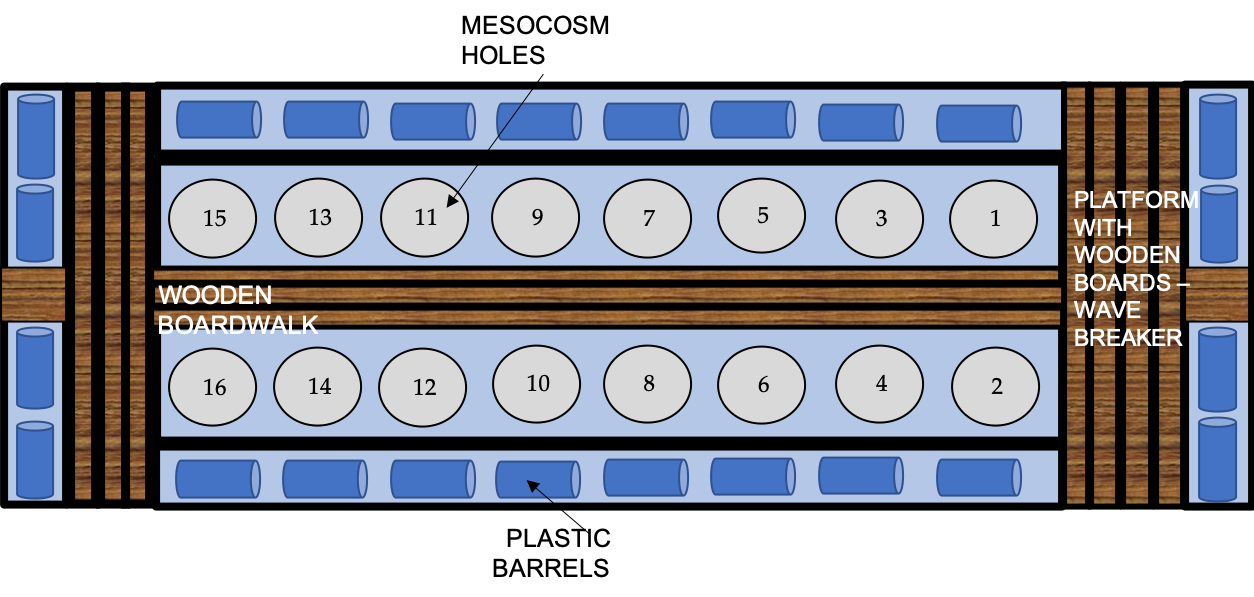METU Mesocosm System I (MMS I)
Last Updated:
This system is in-lake system deployed at METU campus Experimental lake which is in close proximity to the Limnology Laboratory (<1 km). It is a semi-mobile system that can be transferred to other locations by dismantling and it consists of 16 cylindrical (1.2 m diameter) robust fibreglass tanks either in 1.2 m or 2.2 m height. In lake, the upper edges of all mesocosms are attached to pontoon bridges 20 cm above the water surface to avoid incursion of water during windy periods. Eight mesocosm tanks are arranged in two rows for ease of access. The pontoon bridges are wood constructions and the floating devices consist of 32 plastic barrels, each 120 L. It is free floating and anchored only at the platform end, which, irrespective of wind direction, serves as a wave breaker and landing point for boats.
The METU Mesocosm System I offers set-ups of low and high-water levels (1.2 and 2.2 m) and the connection to 10 cm sediment layers (90% (by volume) washed sand (grain size <1 mm) and 10% sediment from a lakes). To simulate shallow, fully mixed lake conditions, the water in the mesocosms is continuously circulated during experiments using electrically powered pumps.


We are able to measure physicochemical parameters, including water temperature, salinity, electrical conductivity, oxygen, pH, water transparency, alkalinity, suspended solids, color, nutrients (NO3, NO2, NH4, total nitrogen, PO4, and total phosphorus), major ions, and dissolved organic carbon, besides biological communities, such as bacterioplankton, phytoplankton, zooplankton, ciliates, heterotrophic nanoflagellates, periphyton, chlorophyll-a, major photosynthetic pigments, macrophyte cover, fish, and macroinvertebrates as well as metabolism, greenhouse gas emissions (CO2 and CH4), and decomposition.
